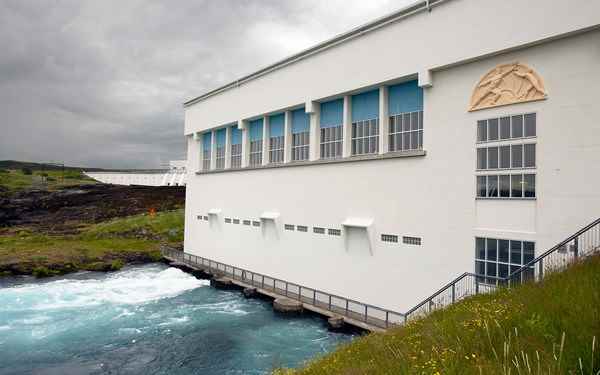Ljósafoss hydroelectric power station, Iceland. Image: Landsvirkjun.
Ljósafoss (Iceland) – I am in an underground cavern under the Ljósafoss hydroelectric power station and I hear a deafening noise as thousands of liters of water rush through pipes to power the turbines of the power station and flow into the river below, thereby creating huge amounts of electricity.
A few hours earlier, I was looking at a lunar landscape, with tall columns of hot steam rising into the air from the Hellisheiði power station, which is one of the largest geothermal power stations in the world. Welcome to Iceland, home to a collection of hydroelectric and geothermal facilities that together account for almost 70% and 30% of the country’s energy production, respectively (there is also some wind power).
While the rest of Europe suffers from escalating gas prices and faces a winter of power cuts, Iceland has taken advantage of its natural resources and uses 100% renewable energy. This is the case of the hydroelectric plant operated by Landsvirkjun and the geothermal installation of ON Power, which power many things, from houses to cars – including data centers.
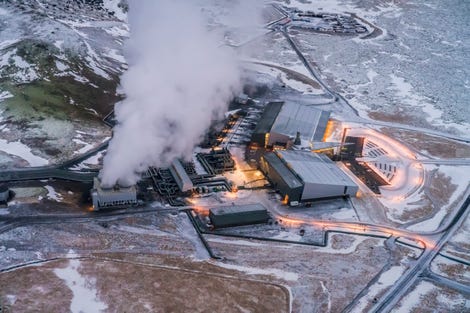
Hellisheiði Power Station is the largest in Iceland. Picture: ON Power.
The main contributors of greenhouse gases in the IT sector are data centers
These large-scale developments are exciting and innovative, but they’re also potentially critical for technology professionals tasked with reducing their organization’s carbon emissions and boosting its green credentials.
Technology has the power to improve the lives of all of us, but our ever-increasing reliance on data puts a huge strain on the environment. It is estimated that the IT sector is responsible for around 3% of global carbon emissions. The main contributors of greenhouse gases in the IT sector are data centers (45%).
Our constant demand for information will increase the pressure on the environment and may lead to a further increase in emissions. So is there a way to meet these demands in a more sustainable way? In the far north of Europe, a group of Icelandic companies that supply electrical installations, data centers and undersea cabling believe their combined resources offer a greener alternative.
BMW, Icelandic infrastructure customer
Tate Cantrell, chief technology officer at Verne Global, a data center company whose facilities are powered 100% by sustainable energy sources, including hydroelectric and geothermal lead this project.
According to him, more and more professionals in large companies are realizing that sustainability is not only important for the board of directors, but also for the end customers who use the company’s products.
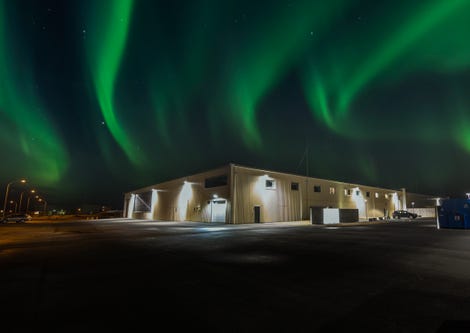
Verne Global’s data centers in Iceland are powered by sustainable sources. Image: Verne Global.
Some companies are already aware of the role IT plays in the production process. Tate Cantrell gives the example of BMW, which is one of Verne’s long-time clients. “The reason they chose us in 2012 was because they wanted to prove to the world that not only were they building the next generation of sustainable cars, but they understood that data centers are part of the raw materials that make up cars,” he says.
So where is the catch?
Embracing sustainable computing power as part of the production process isn’t a slow-moving trend, says Tate Cantrell — he says other companies in manufacturing and finance are taking similar steps.
This is also acknowledged by Gisli Kr., Commercial Director of data center specialist atNorth, whose company has been delivering high-performance computing solutions at scale since 2009. “Today, environmentally sustainable computing is now available cheaper. Our clients are companies and this subject is gaining ground in traditional companies. »
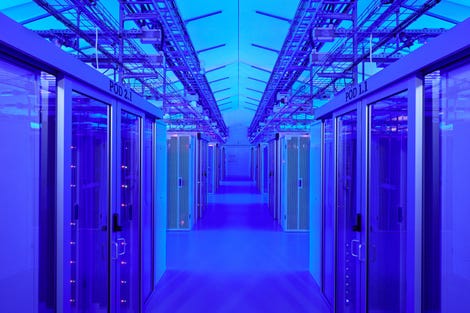
High performance computing facilities in Iceland. Image: atNorth.
With continental Europe facing a shortage of sustainable energy, a growing number of professionals looking to run workloads efficiently and cost-effectively might consider Iceland. So where is the catch?
One of the biggest hurdles is latency
One of the main obstacles is latency. Iceland is a long way from mainland Europe, and that distance matters when you’re running data through undersea cables to make important, even real-time, business decisions.
Gisli Kr. acknowledges that extremely low latency will be crucial for some professionals, such as those working in high-frequency trading.
95% of apps can work effectively from Iceland
However, he estimates that up to 95% of apps can work effectively from Iceland. It encourages business leaders to “zoom out” and think about what constitutes acceptable latency for their business.
“It takes courage,” he argues. “One of our clients in the financial services industry decided to place their data in a low carbon footprint zone. It had three data centers in the UK and mainland Europe, with very low latency between sites. They moved a third of their workload to Iceland – and once they were up and running they found they were getting lower total costs of ownership for their workload in Iceland than at their previous locations . »
This financial company has undertaken enormous work to make its applications work with lower latency. Now the company is running its analytics app from Iceland, with lower costs and a lower carbon footprint.
More cables for Iceland
As a bonus, the company’s efforts to optimize its applications means that these tools can now be deployed anywhere in the world, giving the company more flexibility and resiliency in terms of the application stack.
Professionals should note that data speeds will be further improved next year, when Farice, the telecommunications specialist and submarine cable operator, opens IRIS, its third and newest data connection between Iceland and Europe.
Þorvarður Sveinsson, CEO of Farice, explains that the project to create this third cable has been in the making for a long time and that much of the effort to establish this 1,750 km long cable takes place behind the scenes.
“It took four years, but you don’t see much of this work. The cables are designed in the USA, you see the cable land on the shore, then the ship pulls away and lays the cable. »
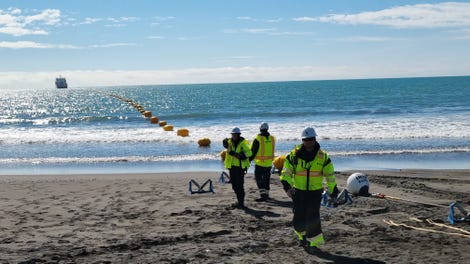
Laying of Icelandic submarine cables. Image: Farice.
All these efforts should be amply rewarded. Currently, about two-thirds of Farice’s cabling capacity is used by data centers. The new cable will offer increased capacity and speeds.
The current latency for data traveling between Reykjavik and London is 18ms one way. IRIS will reduce one-way latency to London to 15ms and to around 10.5ms to Ireland. “The reduction in latency means that, despite being very far north, Iceland is getting closer to Europe,” says Þorvarður Sveinsson.
Source: ZDNet.com
